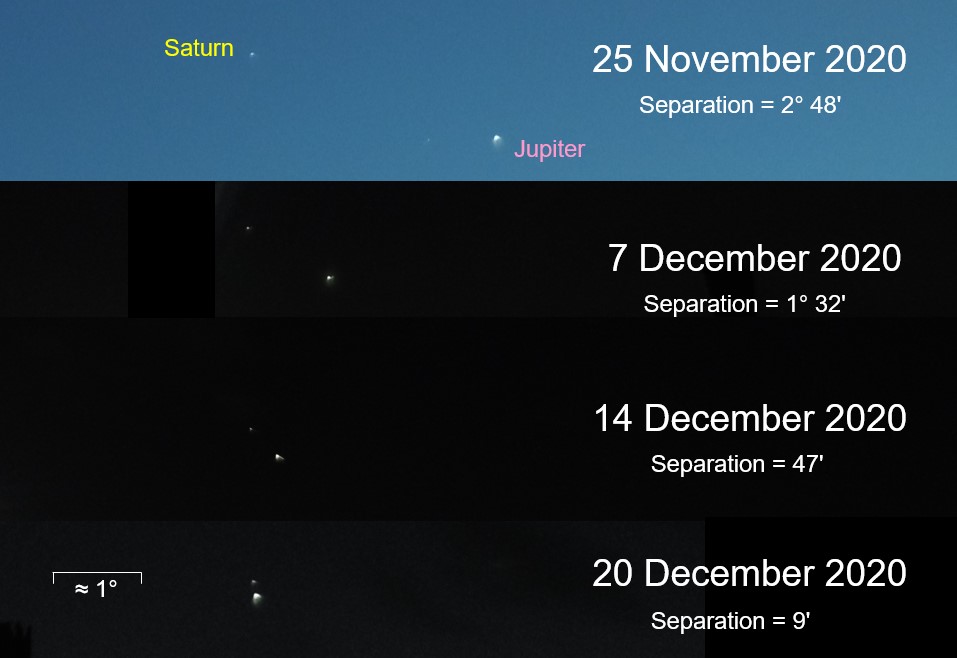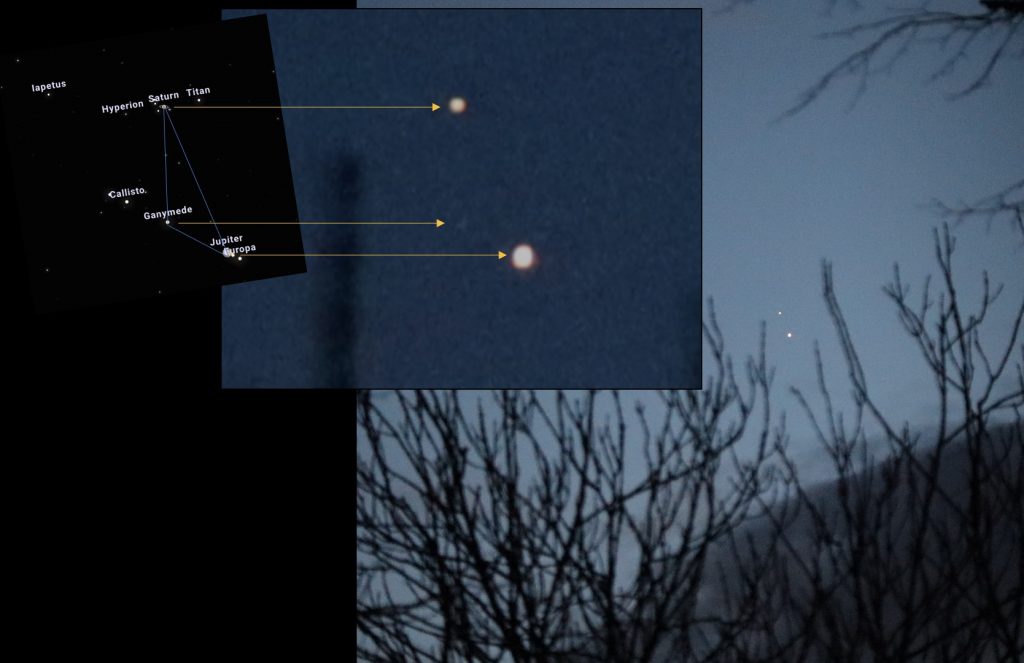In December 2020, we asked members of the Physics and Astronomy community to look up and capture a chance-of-a-lifetime conjunction of Jupiter and Saturn – here are some of the photos.
As we described in our December blog post, on December 21st Jupiter and Saturn appeared closer together than at any point in the previous 400 years, a sight not to be missed. Many of you caught a glimpse of these two gas giants in the night sky – some with the naked eye, some with binoculars, some with telescopes. We hope you thought about the Juno and Cassini missions, intrepid robotic explorers that revealed a range of new discoveries at these giant planets.
Luke Morriss, one of our first-year undergraduates, captured a sequence of images from sites around Leicester and Oadby in late November and December, tracking as the worlds approached conjunction. Luke was using a Celestron AstroMaster 130EQ 130 mm Newtonian reflector telescope, talking images by holding his camera (Panasonic LUMIX DMC-SZ10 digital camera) up to the eyepiece of the telescope (20 mm eyepiece, for a magnification of 32.5×). The images in the montage below simply used his digital camera on Zoom.

Dr. Leigh Fletcher and his daughter used a DSLR camera with 200 mm lens to capture the conjunction through trees and clouds on the night before the close encounter. Using Stellarium, they were able to identify Jupiter’s largest moon Ganymede in several of the digital images without the aid of a telescope or binoculars.

If you’re lucky enough to capture images that represent the research themes within our School, please do share them by emailing phys.community@le.ac.uk.

 Subscribe to Physics & Astronomy's posts
Subscribe to Physics & Astronomy's posts
Recent Comments